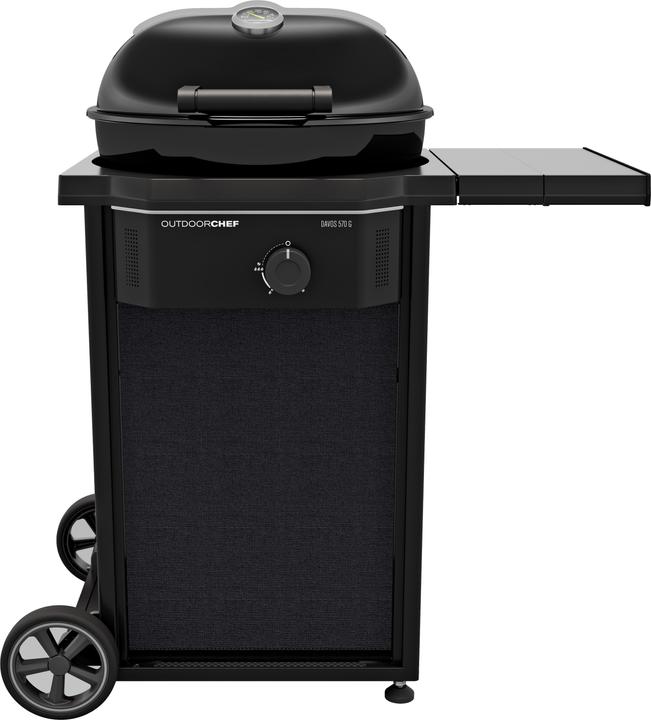

Are you doing barbecues right?
In summer, there only seem to be two ways to have a perfect day: swimming or having a barbecue. I’m surrounded by smoke signals and dust clouds from every direction. The charcoal has been glowing non-stop, yet plenty of mistakes are being made on the grill above it.
Admittedly, I’d rather have someone else do the dirty work for me than slave away at the bbq myself. My own barbecue duties have so far been limited to a few evenings with my environmentally friendly crackling grill on my mini-balcony. That, and jumping in at birthday parties whenever the self-appointed grill master (in my circle, unfortunately, this is a man 99 per cent of the time) fancies a bite to eat.
Nevertheless, if I’ve learned anything from social media, it’s that criticism is always called for – even if you couldn’t do any better yourself. So I judge my uncle’s sausages – silently, at least. The sausages he grilled at far too hot a temperature, turning them black. Or the shreds of halloumi that remain stuck to my friend’s grill instead of making it onto a dinner plate.
Six pro tips
I judge them silently because, unlike some Twitter users, I’m aware that no-one likes taking advice from a backseat driver. I’d better ask an expert. Claudine Nyaguy is a Swiss grill master, who’s shown me how we can all be better on the barbecue.
1. Baking paper, not aluminium foil
Aluminium foil is a practical packaging material and much easier to handle than cling film. But it’s also energy-intensive to produce and doesn’t work well with all foods. Acid and salt dissolve aluminium particles from the foil, which can transfer to the food. Too much aluminium in your body can have a negative impact on your health, so you’re better off switching to baking paper.
2. Only wood makes a difference
It actually makes no difference whether you have an electric, gas or charcoal barbecue. After all, charcoal is, surprise surprise, completely charred and possesses no flavourings, essential oils or vegetable matter whatsoever. In other words, nothing that could lend the food any flavour. With fresh wood, it’s a different story. Barbecued food will genuinely taste different over a real fire.
3. Don’t forget the indirect zone
A lot of barbecue goodies end up right on the hottest part of the grill because everybody’s hungry. This tends to be useful for giving them a quick blast of heat, but not for much else. Indirect grilling is gentler on the meat than high temperature grilling. Marinated meat should always be roasted indirectly, otherwise the marinade will burn. Cuts from older animals with a high collagen content take time to tenderise as well. And the indirect zone won’t do your bratwurst any harm either. Leave it there for about ten minutes so that it gets hot in the middle, then place it in the direct zone with the lid open to give it a grill pattern.
4. Fish with lemon
When I do fire up the barbecue myself, I practically never cook fish. You see, the skin always gets stuck to the grill plate. That’s going to change this summer thanks to Claudine revealing a simple tip. The slimy, white protein layer on the skin is what makes the fish stick to the grill. «Wrap the belly of the fish around half a lemon or orange and pop it into the indirect zone on the grill.» This solidifies the protein. After about ten minutes, the skin is completely dry and you can put the fish directly onto the grill plate.
There’s a second big mistake made with fish: «Never cut the skin, otherwise the fish will lose its juiciness,» Claudine explains.

5. Bring meat up to room temperature
Give your meat at least an hour to get to room temperature. Going directly from the fridge to the barbecue causes a temperature shock in your steak. The consequence? The meat becomes tough. It only makes sense to put cold meat directly onto a barbecue if the cut has a thick layer of fat. That way, the flavour-packed fat doesn’t escape through the bars of the cooking grate.
6. The second cooking grate gets really hot
Lots of barbecues have a second cooking grate above the main grill surface, which many people use to keep food warm. But think back to your last trip to the sauna. If you sit in the upper row, you’ll sweat twice as much as you do in the lower one. It’s no different on the barbecue. With the lid closed, the meat will get another good blast of heat.
You won’t quite become a pro with these barbecue tips, but they’ll stem the flow of silent criticism in my head. I’m looking forward to the next cookout invitation already. 😉
This article was published in a similar form on 1 June, 2019.
My life in a nutshell? On a quest to broaden my horizon. I love discovering and learning new skills and I see a chance to experience something new in everything – be it travelling, reading, cooking, movies or DIY.
Practical solutions for everyday problems with technology, household hacks and much more.
Show all



